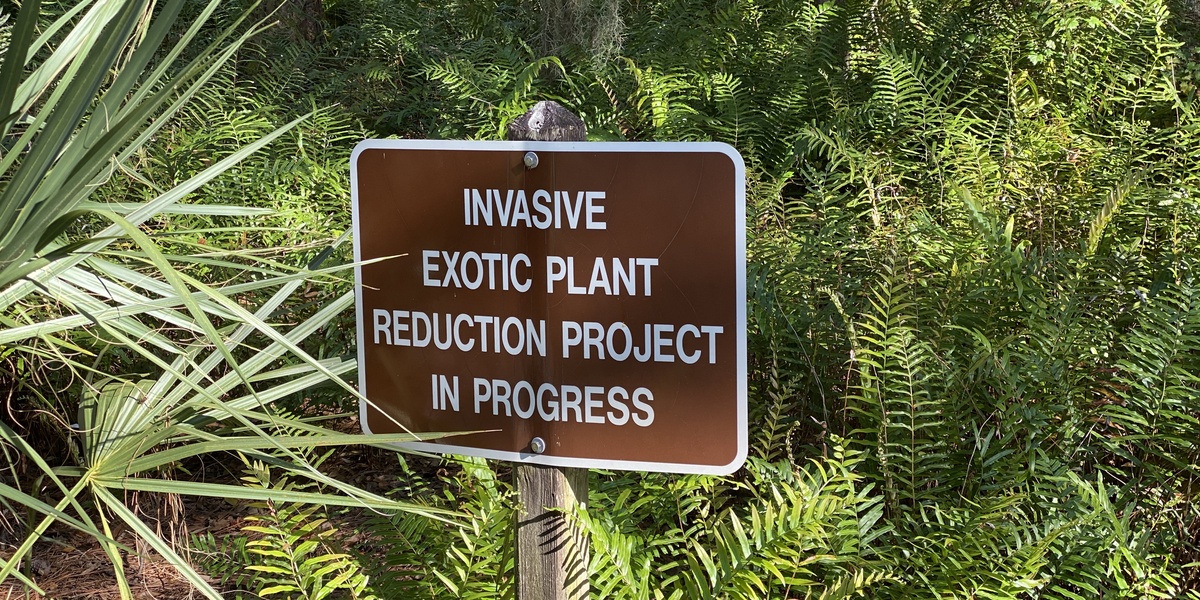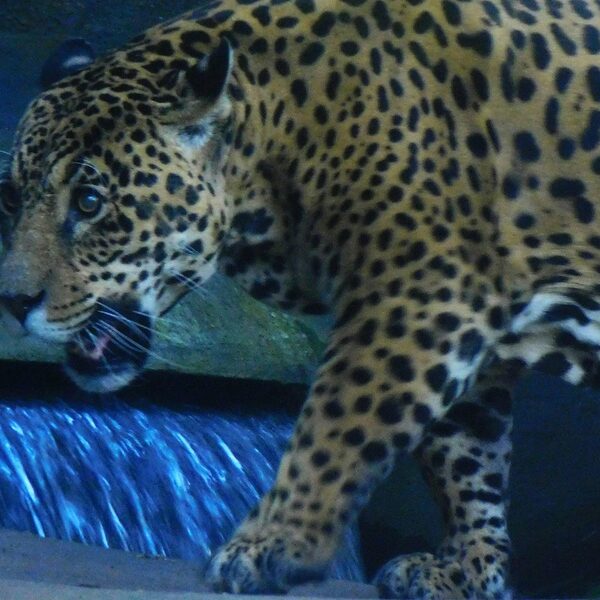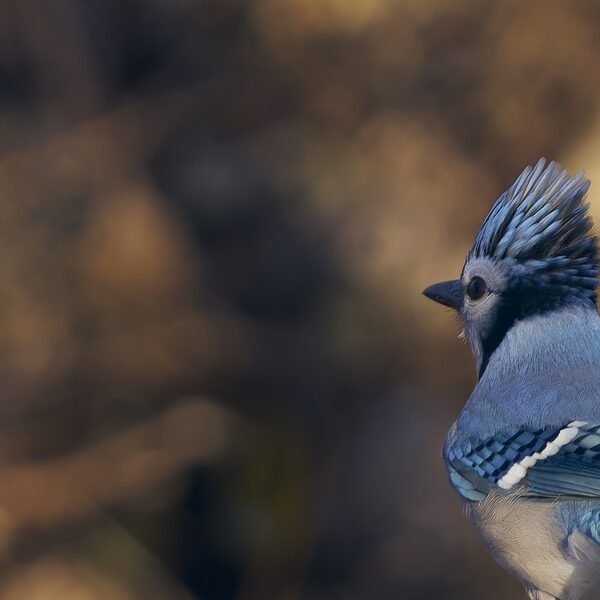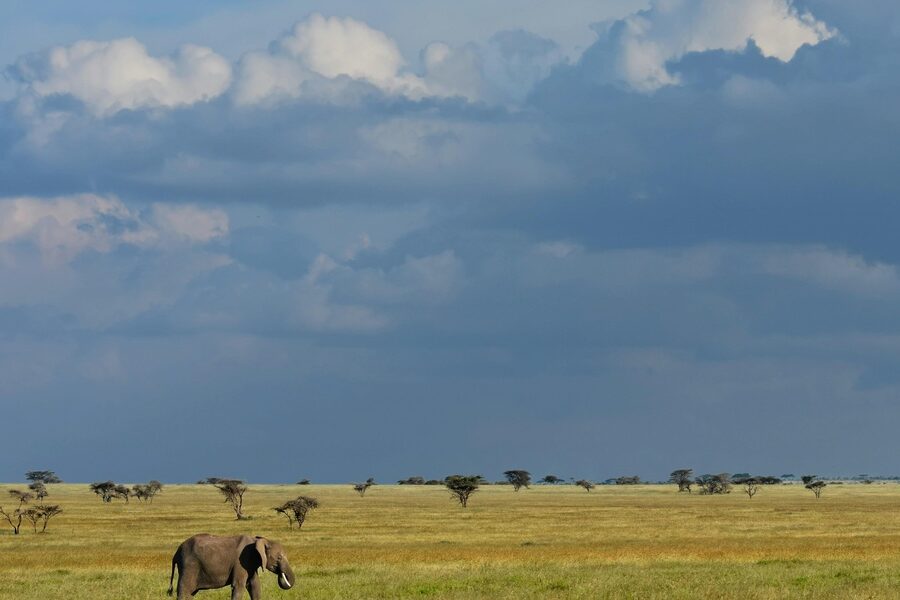Bulgaria’s rivers, coasts and mountain forests are rich with native life, but non-native plants and animals have quietly reshaped many habitats. From farmland to protected reserves, these arrivals can reduce biodiversity, damage crops and alter waterways, making local monitoring and clear information increasingly important.
There are 30 Invasive Species in Bulgaria, ranging from American mink to Wild cucumber. For each entry the data are organized under the columns Scientific name,Status,Main regions so you can quickly see identity, current spread and where management is focused — you’ll find below.
How do invasive species harm Bulgaria’s native wildlife and habitats?
Non-native species can outcompete or prey on native plants and animals, change soil or water conditions, and disrupt food webs; for example, mammalian predators can reduce ground-nesting bird populations, while aggressive plants can choke wetlands or pastures. Management focuses on early detection, targeted removal, habitat restoration and public awareness to limit long-term damage.
How can I report a sighting or help control invasive plants and animals?
Report observations to regional environmental authorities or conservation NGOs and use citizen-science apps (e.g., iNaturalist) to document records; follow local guidance on safe removal, never release pets or plants into the wild, and join organised monitoring or removal events to support coordinated control.
Invasive Species in Bulgaria
| Name | Scientific name | Status | Main regions |
|---|---|---|---|
| Ragweed | Ambrosia artemisiifolia | invasive | Lowlands, Danube Plain, river valleys |
| Himalayan balsam | Impatiens glandulifera | invasive | Rivers, streams, damp shaded banks |
| Giant hogweed | Heracleum mantegazzianum | invasive | Riverbanks, roadsides, low mountains |
| Canadian goldenrod | Solidago canadensis | invasive | Meadows, roadsides, riparian zones |
| Giant goldenrod | Solidago gigantea | invasive | Riparian zones, wet meadows, roadsides |
| Japanese knotweed | Fallopia japonica | invasive | Roadsides, riverbanks, urban brownfields |
| Hybrid knotweed | Fallopia x bohemica | invasive | Riverbanks, disturbed urban sites |
| Giant knotweed | Fallopia sachalinensis | recorded | Urban margins, river corridors |
| False indigo bush | Amorpha fruticosa | invasive | Floodplains, Danube valley, riverbanks |
| Tree-of-heaven | Ailanthus altissima | invasive | Urban areas, roadsides, railways |
| Black locust | Robinia pseudoacacia | invasive | Forestry edges, roadsides, degraded lands |
| Box elder | Acer negundo | invasive | Riverbanks, urban green spaces |
| Red swamp crayfish | Procambarus clarkii | invasive | Freshwater lakes, ponds, wetlands, rice fields |
| Chinese pond mussel | Sinanodonta woodiana | established | Rivers, reservoirs, irrigation canals |
| Asian clam | Corbicula fluminea | established | Danube, lakes, slow-flowing rivers |
| Mosquitofish | Gambusia holbrooki | established | Ponds, drainage ditches, wetlands |
| Pumpkinseed | Lepomis gibbosus | established | Lakes, reservoirs, slow rivers |
| American mink | Neovison vison | invasive | Wetlands, river corridors, fishponds |
| Nutria | Myocastor coypus | invasive | Wetlands, riverbanks, reedbeds |
| Raccoon | Procyon lotor | recorded | Urban areas, farmlands, wetlands |
| Asian tiger mosquito | Aedes albopictus | established | Urban areas, transport hubs, coastal zones |
| Fall webworm | Hyphantria cunea | established | Forests, parks, orchards |
| Horse-chestnut leaf miner | Cameraria ohridella | established | Urban parks, horse-chestnut stands |
| Box tree moth | Cydalima perspectalis | established | Parks, gardens, Buxus stands |
| Common cocklebur | Xanthium strumarium | invasive | Arable fields, roadsides, riverbanks |
| Colorado potato beetle | Leptinotarsa decemlineata | established | Potato fields, vegetable crops |
| Spotted wing drosophila | Drosophila suzukii | established | Soft fruit orchards, gardens |
| Western flower thrips | Frankliniella occidentalis | established | Greenhouses, open-field crops, orchards |
| Wild cucumber | Echinocystis lobata | recorded | Riverbanks, disturbed sites |
| Evening primrose | Oenothera biennis | established | Roadsides, disturbed ground |
Images and Descriptions
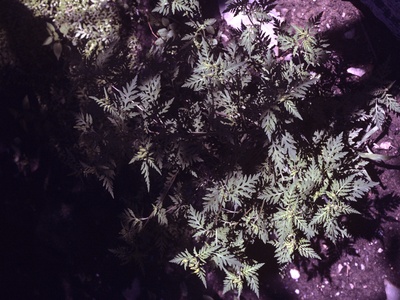
Ragweed
North American annual ragweed causing severe allergic reactions and crop competition; now widespread across Bulgarian lowlands, river valleys and disturbed soils. Impacts human health and agriculture. Control by timely mowing, herbicides, seedbank management and reporting sightings to authorities.
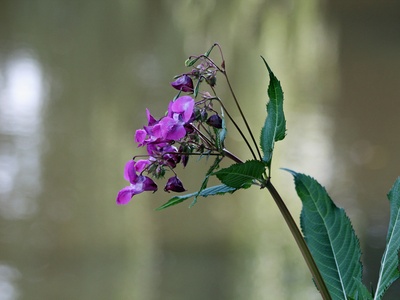
Himalayan balsam
Himalayan balsam invades stream and riverbanks, outcompeting native plants and increasing erosion. Originating from the Himalayas, it forms dense stands in Bulgaria. Control by pulling before seed set, repeated cutting and targeted herbicide application, with river catchment coordination recommended.
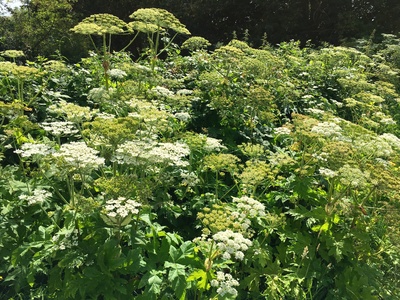
Giant hogweed
Giant hogweed from the Caucasus causes severe skin burns and scars; forms tall monocultures that shade native flora. Found along rivers and disturbed sites in Bulgaria. Control by protective removal, repeated cutting, herbicides and public awareness to avoid contact.

Canadian goldenrod
Canadian goldenrod spreads via rhizomes and seeds, displacing native meadow species and reducing biodiversity. Origin North America; common in Bulgarian fields and roadsides. Manage with mowing, targeted herbicides, restoration planting and preventing seed set to reduce spread.
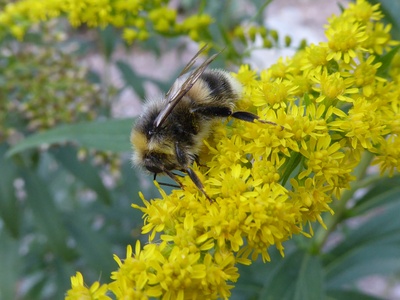
Giant goldenrod
Giant goldenrod establishes dense stands in wet meadows and riparian areas, suppressing native plants and altering habitats. Introduced from North America, it’s widespread in Bulgaria. Control requires integrated mowing, herbicides and restoring native vegetation to compete with regrowth.

Japanese knotweed
Japanese knotweed forms impenetrable thickets that damage infrastructure and biodiversity; introduced from East Asia. In Bulgaria it thrives along waterways and disturbed urban sites. Control by persistent cutting, root excavation, and systemic herbicides; long-term monitoring is essential.

Hybrid knotweed
Hybrid knotweed combines vigor of parent species and spreads aggressively in Bulgaria, outcompeting natives and damaging structures. Control mirrors Japanese knotweed methods: persistent cutting, herbicide treatment and excavation; containment and reporting help prevent new introductions.
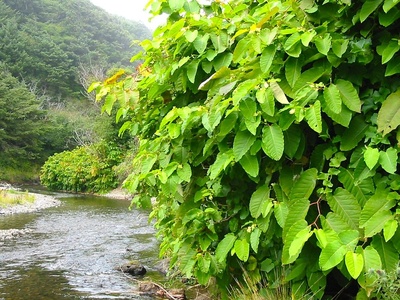
Giant knotweed
Giant knotweed from East Asia is recorded in Bulgaria and can dominate river corridors and wastelands, reducing native diversity and altering banks. Management needs coordinated cutting, herbicide application and monitoring to prevent spread and hybridization with other knotweeds.
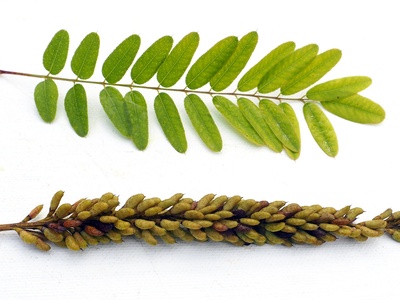
False indigo bush
False indigo bush, native to North America, invades Bulgarian floodplain forests and riverbanks, forming dense thickets that alter successional dynamics and reduce native tree recruitment. Control involves mechanical removal, repeated cutting, herbicides and restoration of native floodplain vegetation.

Tree-of-heaven
Tree-of-heaven, native to China, colonizes urban sites, railways and riverbanks in Bulgaria; grows fast, suppresses natives and damages infrastructure. Control via cutting with stump treatment, targeted herbicides and planting native alternatives; monitor sucker regrowth to prevent re-establishment.

Black locust
Black locust, from North America, forms dense stands in Bulgarian open forests and disturbed areas, fixes nitrogen and alters soils, impacting native plant communities. Management includes selective felling, root treatment, controlled burning where appropriate, and restoring native tree species.
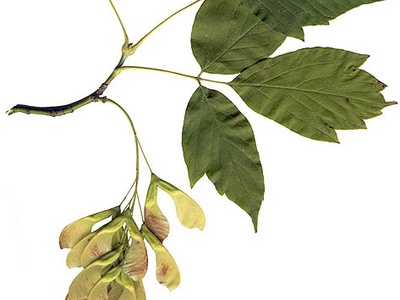
Box elder
Box elder from North America colonizes riverbanks and urban green areas in Bulgaria, spreading by seeds and shading native seedlings. It alters riparian forests and urban biodiversity. Control by removing seedlings, selective cutting and preventing seed production in urban plantings.
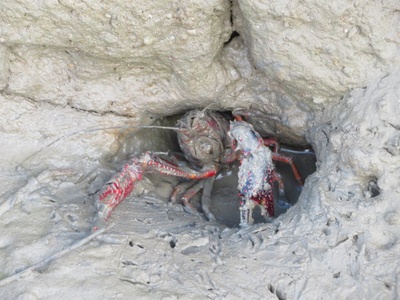
Red swamp crayfish
Red swamp crayfish damages native freshwater fauna, burrows banks causing erosion and spreads diseases. Native to North America, it’s established in Bulgarian waters and agricultural wetlands. Management is difficult: trapping, local eradication, public awareness and preventing further translocations are key.
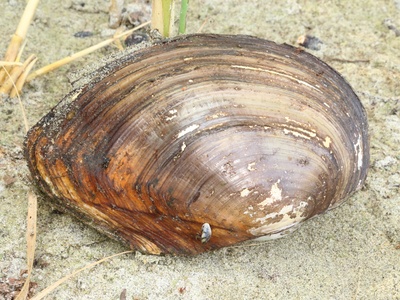
Chinese pond mussel
Chinese pond mussel arrived with fish transfers and has spread in Bulgarian waterways, outcompeting native bivalves and altering ecosystems. Control focuses on preventing spread via fish stocking controls, boat hygiene, monitoring and habitat management; eradication is rarely feasible.
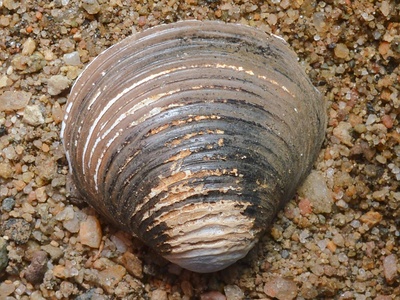
Asian clam
Asian clam forms dense beds in Bulgarian waterways, alters sediment dynamics, competes with native molluscs and clogs infrastructure. Spread likely via shipping and fishery transfers. Management prioritizes preventing spread, mechanical removal where possible and monitoring of affected sites.

Mosquitofish
Mosquitofish introduced for mosquito control has established across Bulgarian water bodies where it preys on native invertebrates and fish larvae. Control includes habitat restoration, netting, removal and avoiding further introductions; public education on not releasing aquarium fish is critical.

Pumpkinseed
Pumpkinseed sunfish from North America competes with native fish and alters food webs in Bulgaria’s lakes and reservoirs. Introduced by anglers, it can be controlled by targeted fishing, habitat management and preventing illegal stockings.

American mink
American mink preys on native waterbirds, fish and small mammals, disrupting wetland ecosystems in Bulgaria. Introduced via fur-farm escapes, management includes trapping, exclusion from sensitive sites and regulating fur-farm biosecurity to prevent new escapes.
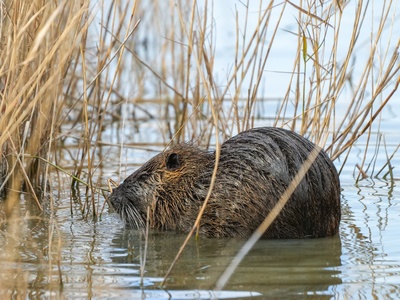
Nutria
Nutria damages wetland vegetation and bank stability through burrowing and feeding; introduced from South America, it is established in Bulgarian wetlands. Control requires trapping, fencing of critical areas, habitat modification and coordinated removal to reduce local populations.

Raccoon
Raccoon has been recorded in Bulgaria and can predate bird nests, damage crops and act as disease vector. As a generalist from North America, it can establish in urban-wildland mosaics. Report sightings, support control by wildlife authorities and avoid feeding individuals.
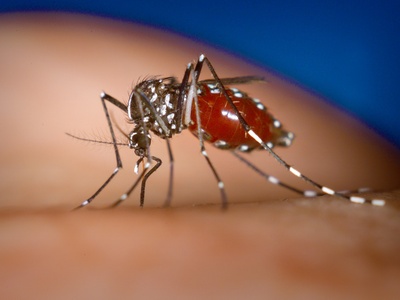
Asian tiger mosquito
Asian tiger mosquito is now established in parts of Bulgaria, biting humans and potentially transmitting diseases. Originating from Asia, it breeds in artificial containers. Control includes removing standing water, community insecticide programs, surveillance and reporting through public health channels.
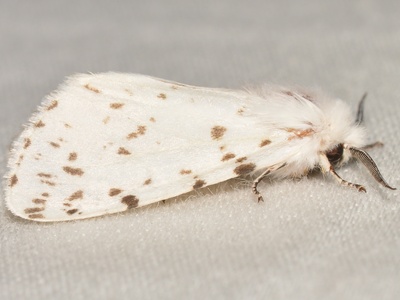
Fall webworm
Fall webworm defoliates many tree species and forms conspicuous webs on branches; native to North America, it has spread across Bulgaria and can cause aesthetic and growth impacts. Management uses mechanical removal of webs, biological control agents and targeted insecticides for severe outbreaks.
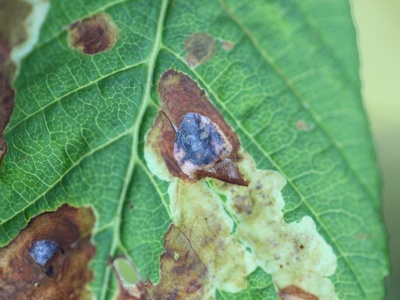
Horse-chestnut leaf miner
Horse-chestnut leaf miner is widespread in Bulgarian towns, causing premature leaf browning and reduced tree vigor. Originating from the Balkans and expanding rapidly, control includes sanitation by leaf removal, biological control research and replacement with resistant varieties when necessary.
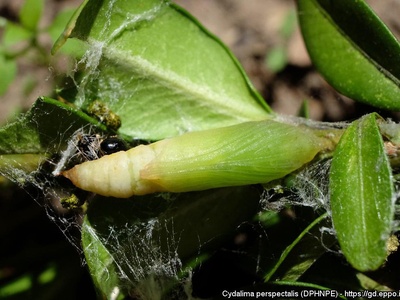
Box tree moth
Box tree moth from East Asia defoliates ornamental and wild Buxus shrubs in Bulgaria, causing dieback. Control involves pheromone traps, biological control, insecticide treatments and replacing severely affected plants with alternative species to protect urban and natural Buxus populations.
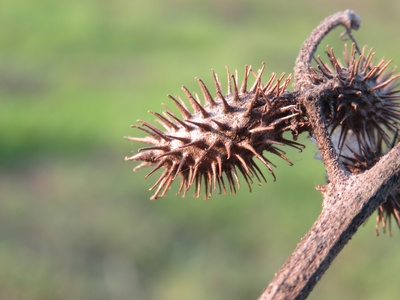
Common cocklebur
Common cocklebur from the Americas invades disturbed soils and crop margins in Bulgaria, competing with crops and contaminating harvests with burs. Management includes crop rotation, timely cultivation, herbicides and preventing seed dispersal via machinery and livestock.
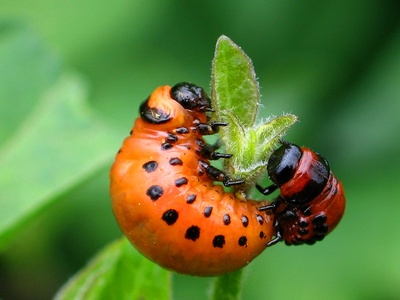
Colorado potato beetle
Colorado potato beetle is a major North American pest established across Bulgaria, defoliating potatoes and other solanaceous crops. Control requires integrated pest management: crop rotation, biological controls, targeted insecticides and monitoring for resistance to protect yields.
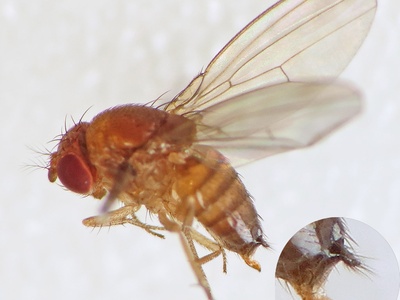
Spotted wing drosophila
Spotted wing drosophila is an invasive Asian fruit fly causing major losses in cherries, berries and soft fruits in Bulgaria. Females oviposit in ripe fruit; control uses netting, baited traps, timely harvesting, sanitation and insecticide rotations to reduce damage.
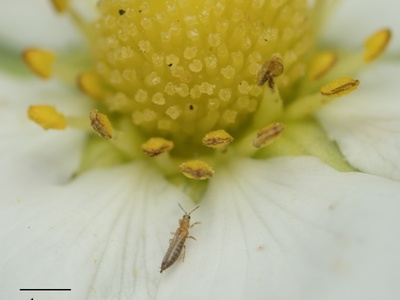
Western flower thrips
Western flower thrips from the Americas damages ornamentals and crops in Bulgaria by feeding and transmitting plant viruses. Management relies on monitoring, biological control agents, selective insecticides and greenhouse hygiene to limit spread and economic impact.
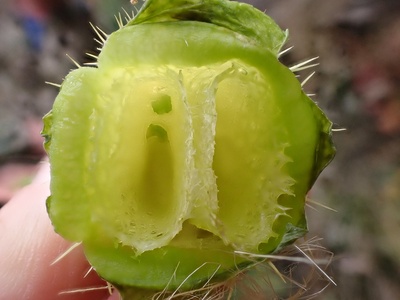
Wild cucumber
Wild cucumber, native to North America, has been recorded along Bulgarian riverbanks where it climbs and smothers native vegetation. It spreads rapidly from disturbed sites. Control by cutting, pulling vines before seed set and restoring native riparian communities reduces reinvasion.
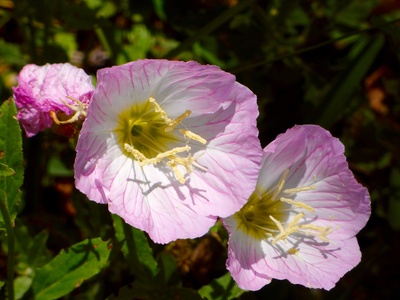
Evening primrose
Evening primrose from North America colonizes disturbed soils and ruderal habitats in Bulgaria, competing with native annuals and changing early successional communities. Manage via removing seed heads, mowing before seeding and restoring native vegetation to limit spread.
